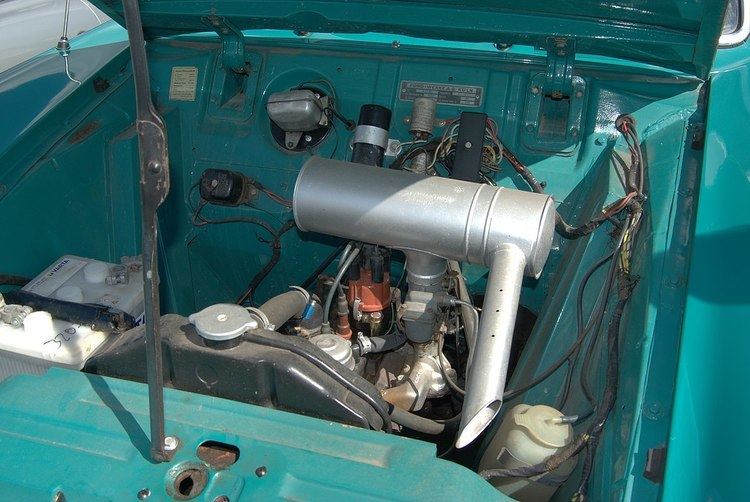Production 1932–1962 Cylinder block alloy Iron | Also called Ford Flathead engine Configuration Side-valve straight 4 Cylinder head alloy Iron | |
 | ||
The Ford Sidevalve is a side valve (flathead engine) from the British arm of the Ford Motor Company. The engine had its origins in the 1930s Ford Model Y, and were made in two sizes, 933cc or "8 HP", and 1172cc or "10 HP". The early engines were very basic and did not have a waterpump as standard relying on thermo-siphon effect to cool, as the Model T's engine had. A water pump was added in 1953 for the 100E models. The Sidevalve engine was used in many smaller Fords as well as farm vehicles, commercial vehicles and a marine version in boats. Production of the engine was stopped in 1962. Windscreen wipers were often driven by the vacuum generated in the inlet manifold.
Contents
- Engine modifications
- Gearbox transmission
- Use Ford cars using side valve engines
- Use Other makers or models using Ford side valve engines
- Ancillary equipment designers other related information
- References
The Sidevalve Engine was also used in German Fords, starting with the Ford Köln in 1932 and ending with the last rear wheel drive Ford Taunus 12M in 1962.
It was then replaced by the Kent engine in Britain and by the Taunus V4 engine in Germany.
Engine modifications
Many ways were explored to enhance the power output of the standard engine, most notably special exhaust manifolds, twin carburettors, stiffer valve springs, thinner cylinder head gaskets and modified camshafts. The nominal horsepower quoted for each engine size comes from the British method of power calculation for road taxation purposes, and bears no relationship with the actual power output. Displacement volume, which was calculated from the cylinder diameter, stroke and number of cylinders being the dimensions that determined the power for road taxation purposes.
Gearbox & transmission
A three speed gearbox was fitted as standard; three forward and one reverse. Several ways of improving the performance through modifications to the gearbox and transmission train were applied; replacement close ratio gears fitted to gearbox, overdrive gears fitted behind the original gearbox and higher ratio crown & pinion gears fitted to the differential unit on the back axle.
